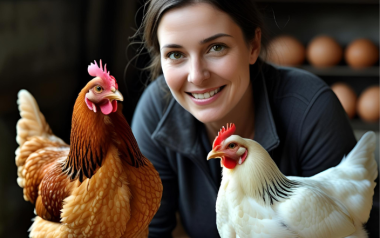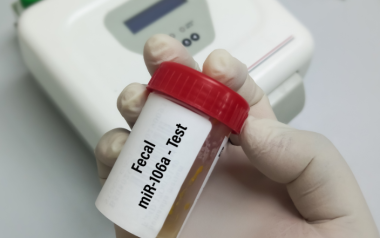“We were concerned the birds would exercise more, be smaller and lose weight,” Bobeck said. “Instead, we found that they spent more time walking around and engaging in more positive behaviors that improved weight gain and bone density.”
06 Dec 2022
Lasers can work as environmental enrichment devices
Motivating broiler chickens to move using specially designed lasers can boost animal welfare and improve meat quality. Recent research from […]
Motivating broiler chickens to move using specially designed lasers can boost animal welfare and improve meat quality. Recent research from Iowa State University indicates that periodically projecting randomly moving, dot-sized laser lights on the floor of broiler pens stimulates birds’ predatory instincts and encourages them to be more active. This is especially important as broilers approach market weight and becomes more sedentary, which can negatively impact their quality of life.
Elizabeth Bobeck, associate professor of animal science, and Anna Johnson, professor of animal behavior and welfare, partnered with Signify, a livestock lighting company, to create a second-generation novel laser device for this research.
The study aimed to evaluate how these devices influence animal behavior and was conducted with support from the U.S. Poultry and Egg Association, USDA, and its National Institute of Food and Agriculture.
Some results of the research are:
- Broilers exposed to the lasers walked more frequently and for longer distances than their counterparts in the control group.
- They also spent more time at feeders and waterers, thus gaining more weight and improving their feed efficiency.
- Despite their increased activity, birds in the treatment group did not experience more lesions, scratches or blisters on their feet or bodies.
Bobeck and Johnson conducted further studies to measure different aspects of broiler performance, meat quality and stress in response to this biologically relevant environmental enrichment from lasers.
- In one experiment, they found the level of serum corticosterone, a stress hormone, in broilers’ blood was actually lower when birds were exposed to the laser devices.
“We wanted to know if the laser was used, does it make the birds more anxious or frightened? The answer was no,” Johnson said. “One thing we were mindful about when creating the lasers is allowing the individual bird choice. If the broilers want to interact with the laser, they can; if they choose not to, they can do that, too. I think that is a real benefit from a welfare standpoint.”
The size and movement of the novel laser devices mimic small insects that chickens naturally want to chase. The lasers emit red light to attract the birds’ attention and ensure animal and human safety.
We picked red because we knew it would be an enticing color for broilers, but also from a safety perspective, Bobeck said. “Other laser colors, like green, have a more intense wavelength and can be more damaging to eyes.”
Unlike other forms of environmental enrichment for poultry, like perches and platforms, the laser devices do not need to be cleaned and sanitized between bird shipments of birds. Johnson noted this not only reduces the potential to spread disease, it also limits labor requirements.
“A device might need occasional tweaking or software upgrades, but for all intents and purposes, it will run on its own,” Johnson said. “That will be super attractive to producers.”
Over 30 undergraduate students and several graduate students have been involved with laser device research at Iowa State. The lasers are currently undergoing research trials at commercial confinement to understand their utility in large operations. Bobeck and Johnson believe this type of environmental enrichment can also benefit smaller flocks, as well as other types of poultry, such as turkeys and laying hens.
Source: Iowa State University
It may interest you: Laser to prevent avian flu transmitted by wild waterfowl in free-range poultry farms









































